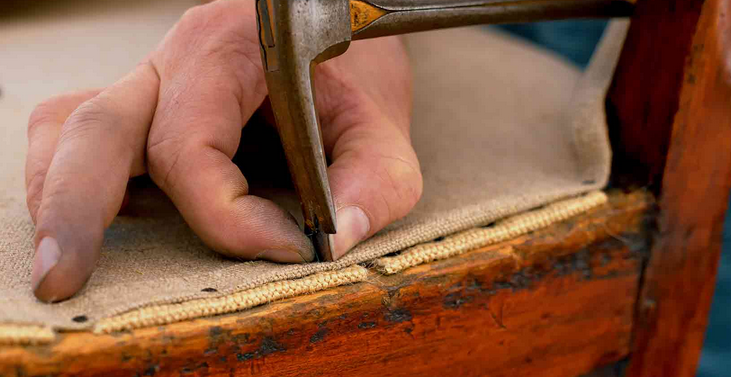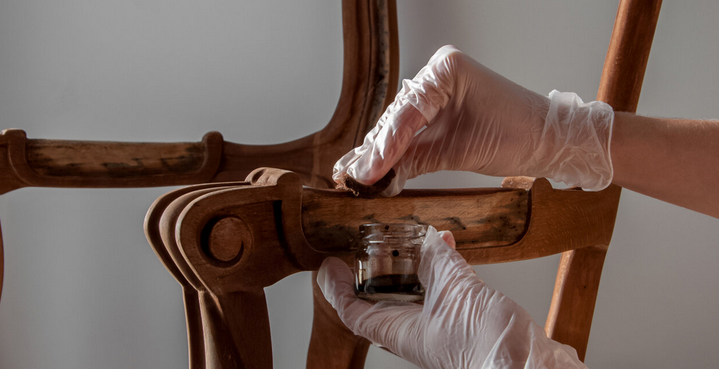Furniture restoration is a captivating blend of artistry and craftsmanship, allowing you to breathe new life into cherished pieces or discover hidden gems at thrift stores and antique markets. This guide explores the art of furniture restoration, from assessing your project to applying the final finish. Whether you’re a seasoned woodworker or a novice DIY enthusiast, here’s how to embark on your restoration journey.

Assessing Your Furniture Restoration Project
Before diving into your project, conduct a thorough assessment:
1. Evaluate the Piece’s Potential
Begin by examining the piece’s condition. Is it structurally sound but marred by scratches and wear, or does it require more extensive repairs?
2. Determine the Wood Type
Identifying the wood type is crucial as it influences the refinishing process. Woods like oak, mahogany, and walnut have distinct characteristics and grain patterns.
3. Assess Finish and Paint Layers
Determine how many layers of finish or paint are on the piece. This helps you plan the removal process effectively.
4. Check for Structural Issues
Inspect joints, legs, and other structural components for damage.
5. Set a Realistic Budget
Decide on a budget for your restoration project. This will influence the extent of work you can undertake and the materials you can use.
Stripping and Cleaning
Once you’ve assessed your piece, the next step is preparing it for restoration:
6. Stripping the Finish
Use a suitable stripping agent to remove old finishes or paint. Follow the manufacturer’s instructions and take safety precautions, as many stripping agents are caustic.
7. Sanding
After stripping, sand the entire surface. Start with coarse grit sandpaper and progress to finer grits. Sanding evens out imperfections and prepares the wood for staining or painting.
8. Cleaning and Repairing
Clean the piece thoroughly to remove any remaining residue. Repair structural issues at this stage, such as regluing loose joints or replacing missing parts.
Restoring the Beauty
9. Staining or Painting
Choose whether to stain or paint your piece. Staining highlights the natural wood grain, while painting allows for creative expression.
10. Selecting the Right Finish
Opt for a finish that complements your chosen look. Polyurethane provides durability, while wax offers a softer, more antique finish.
11. Applying Finish Carefully
Apply your chosen finish in thin, even coats. Sand lightly between coats for a smooth, professional result.
12. Hardware and Details
Don’t forget about hardware and details like knobs, pulls, or decorative elements. Cleaning or replacing these can make a significant difference.
Preserving Your Restoration
After your furniture restoration is complete, follow these steps to ensure its longevity:
13. Regular Cleaning
Dust your restored piece regularly and wipe it down with a damp, lint-free cloth to prevent dirt buildup.
14. Avoid Direct Sunlight
Protect your furniture from direct sunlight, which can cause finishes to fade and wood to dry out or warp.
15. Use Coasters and Mats
Place coasters under glasses and mats under hot dishes to prevent water rings and heat damage.
16. Handle with Care
Be mindful of heavy objects or sharp impacts that could dent or scratch the finish.
17. Periodic Maintenance
Over time, your furniture may require minor touch-ups. Keep your finishing materials on hand for quick fixes.
18. Experiment with Techniques
Don’t be afraid to experiment with various techniques like distressing, antiquing, or decoupage. These can add character and uniqueness to your restored piece.
19. Research and Learn
Take the time to research and learn about different wood types, their properties, and how they respond to various finishes. This knowledge can guide your restoration decisions.
20. Preserve Original Hardware
If your piece has unique or antique hardware, consider preserving it. Cleaning and polishing can often bring back the luster of these vintage elements.
Conclusion
Furniture restoration is a gratifying journey that honors the craftsmanship of yesteryears while allowing your creativity to shine. With careful assessment, meticulous stripping and cleaning, and a thoughtful restoration process, you can transform tired, worn-out furniture into stunning pieces that enrich your living space for years to come. So, roll up your sleeves, pick up your tools, and let your restoration adventure begin!


